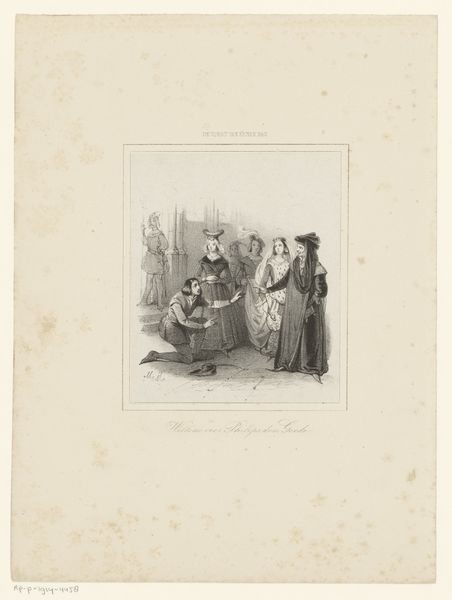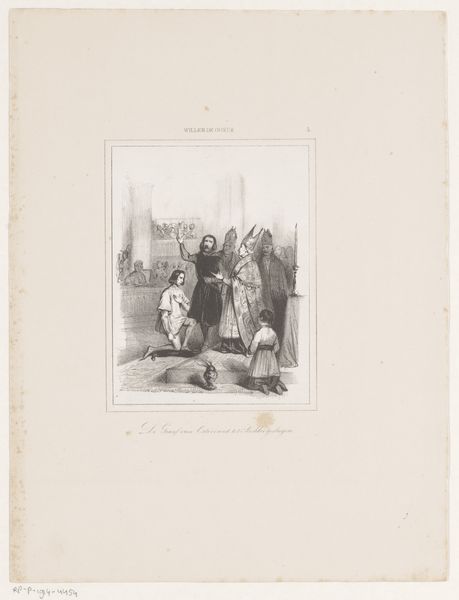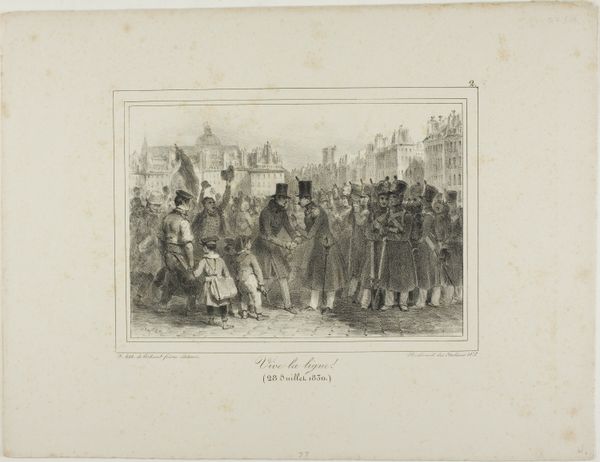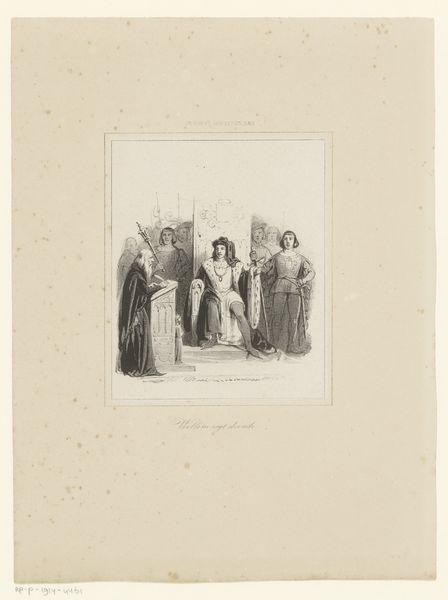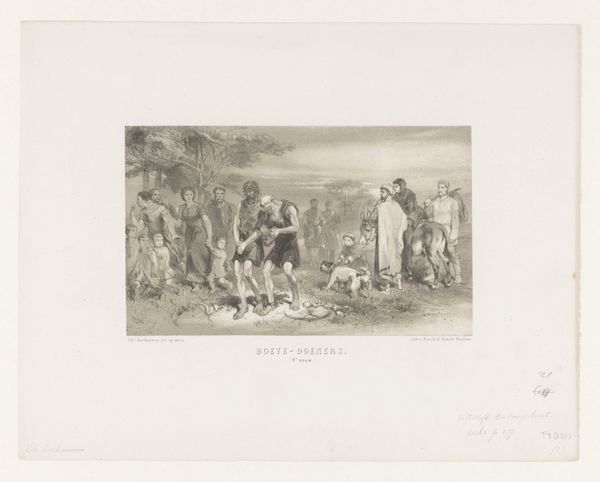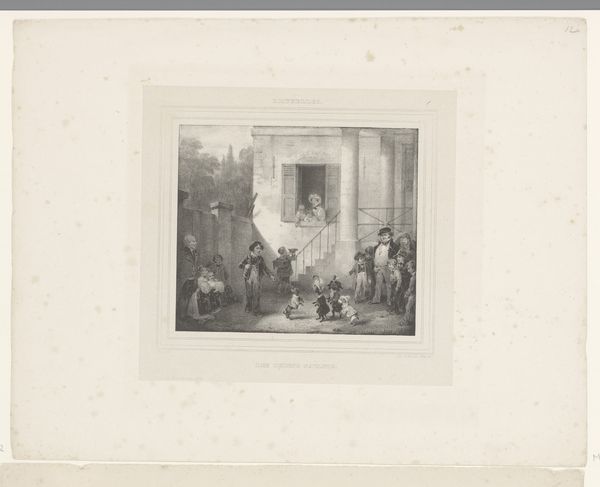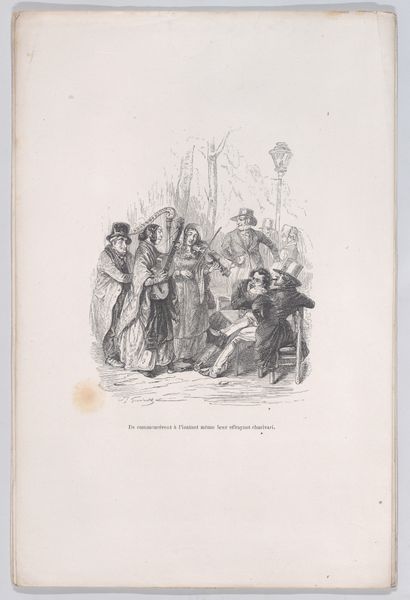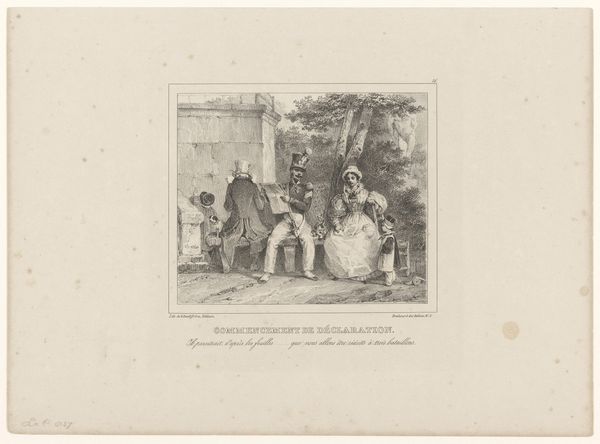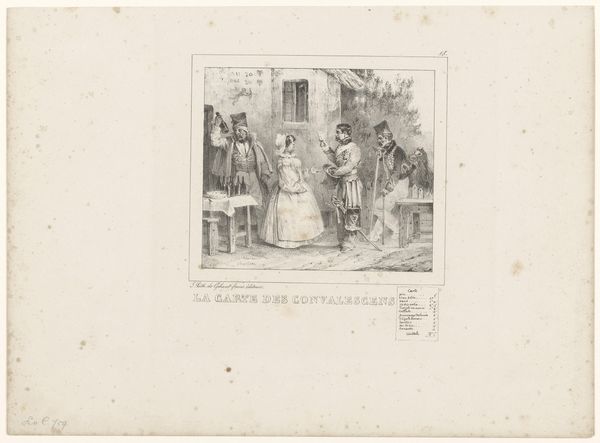
print, engraving
#
portrait
#
narrative-art
# print
#
old engraving style
#
landscape
#
figuration
#
romanticism
#
history-painting
#
engraving
Dimensions: height 315 mm, width 210 mm
Copyright: Rijks Museum: Open Domain
Editor: This print, housed here at the Rijksmuseum, is titled *Keizer Karel V bezoekt het graf van Willem Beukels,* created in 1842. Immediately, I'm drawn to the sharp contrasts created by the engraving. It gives the scene a somber yet distinguished quality. Curator: The work exemplifies Romanticism. The meticulous lines and intricate detail, achieved through engraving, construct an intriguing narrative. It is an encounter with the past memorialized in graphic form. Editor: Speaking of materiality, the choice of engraving seems deliberate. It almost echoes the tradition of illuminated manuscripts. What were the original sources used for the engraving? Were those images accessible for common viewing? Curator: It certainly speaks to accessibility. The print medium, although capable of precise detail, also lends itself to reproduction. By choosing engraving, it enables the story of Charles V's visit to William Beukels' grave to be distributed and viewed far more widely than if it were solely confined to painting, tapestry, or manuscript. The figure of Beukels is on the tomb, which appears to be made of common material like cobblestone or clay rather than a finer one like marble or tile. Editor: True, the use of common building material underscores Beukels' legacy stemming from practical contribution. Looking at the Romantic ideal, the light is interesting: soft where Charles V. stands, darker where Beukels rests. This juxtaposition prompts reflection. It acknowledges their contrasting lives and roles, emphasizing a tension in material status between them, made richer through formal organization. Curator: That's astute. The positioning certainly emphasizes the hierarchy. The print creates a sense of respect from labor. But I question, if the piece didn't include royal status and focused solely on the production of laborers’ material conditions, would its intended audience embrace it to the same degree? It's an interesting interplay. Editor: It certainly highlights an appeal to nostalgia. I suppose the viewer is more focused on its structural elements rather than the true cost and sacrifice of such labor? Perhaps it also provides a connection through romanticizing craft for the royal court? Curator: Very insightful thoughts. This image reminds us to observe both content and context. Editor: Absolutely. A balance that transforms a viewing experience.
Comments
No comments
Be the first to comment and join the conversation on the ultimate creative platform.
